On Thursday 10 March we walked a 10 kilometre loop from Chaumussay.
 |
| The back of the church in Chaumussay. |
 |
| A garden shed in Chaumussay. |
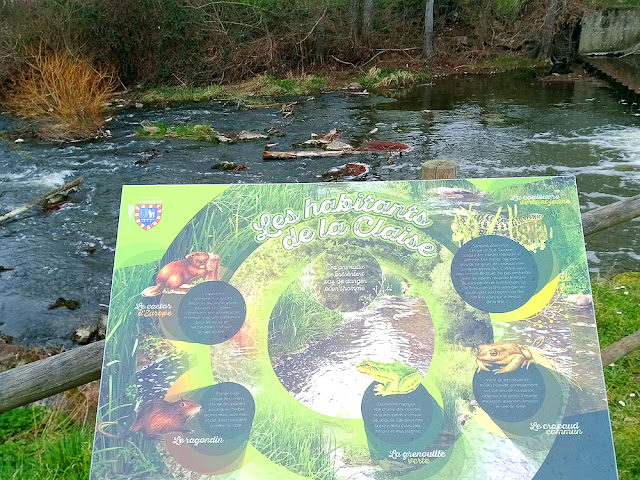 |
| A board to inform the public what lives in the Claise River -- grass snakes, toads, green frogs, coypus and beavers. |
 |
| Lesser Periwinkle Vinca minor (Fr. Petite pervenche) is native to the Touraine Val de Loire. |
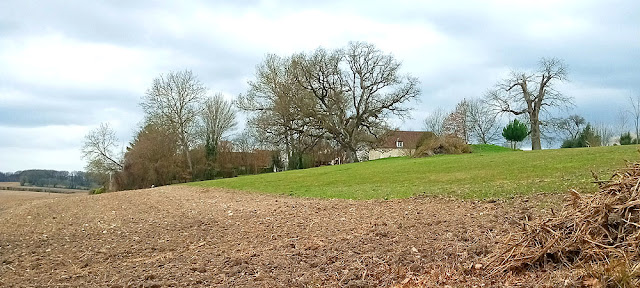 |
| Les Frippières, a hamlet of half a dozen houses. |
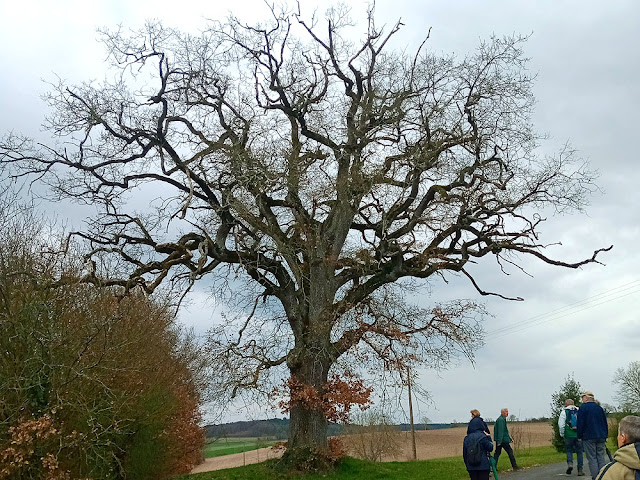 |
| A lovely oak tree (Fr. chêne). |
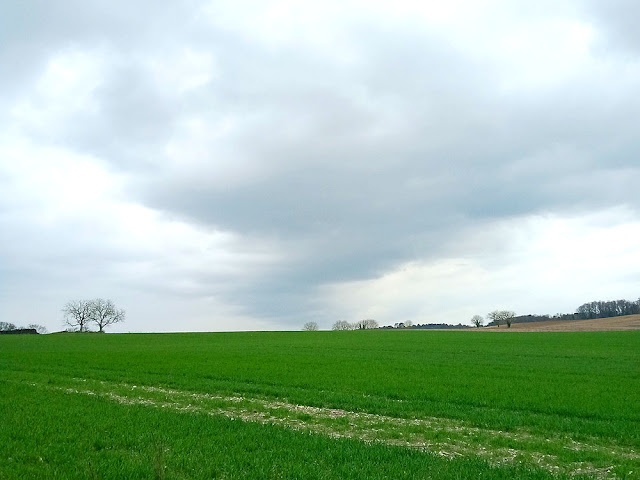 |
| A typical Touraine Val de Loire landscape. |
 |
| Blackthorn Prunus spinosa (Fr. Prunellier sauvage). |
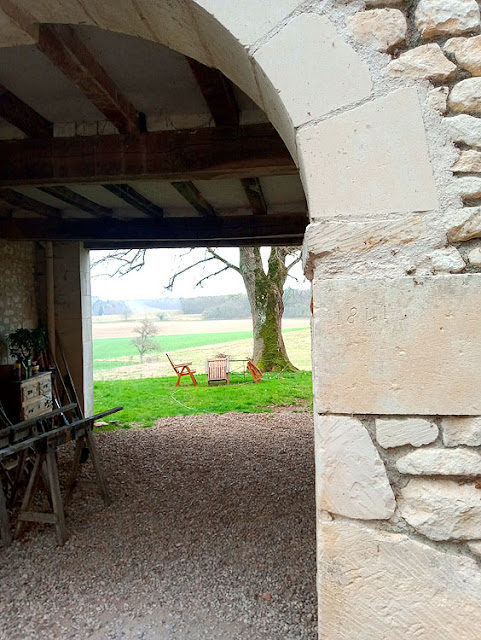 |
| This farmhouse has a rather good view. |
 |
| The same farmhouse. |
 |
| Long-leafed Lungwort Pulmonaria longifolia (Fr. Pulmonaire à longues feuilles). |

8 comments:
Spring has sprung! Le ressort s’est détendu!
You two do quite a bit of walking. Do you go with a group, and is it on a regular basis?
Walking really is the best way to see things, and I appreciate all your photos from these walks. Interesting contrast between the two parts of the house, the fieldstone and the cut stone. Which part do you think was built first?
Carolyn: we walk with two different groups, every Monday and Thursday. I suspect the house is all of a piece in fact, but they were economising, saving the ashlar cut stone for the higher status gable part.
Isn’t Lesser Periwinkle Vinca minor?
chm: you are quite right, and I got your email, but just didn't get round to following it up and correcting the caption. Sorry.
Thank you Susan, Sometimes, I have the impression that my mails don’t go through. I know you must be pretty busy and I appreciate and enjoy your daily posts.
hi it is good to see that the sign has been amended to include beavers, its a pity the other council's don't realise that they are there, the 2 pairs that i was watching have moved on basically from human pressure there is supposed to be a 25mt exclusion zone around them ie the claise did you notice how they have cleaned the claise that old wood was put there by beavers and is as such illegal to remove but unfortunately the people do not know that beavers are there and they are taking there winter food supplies. I just remembered the little piles of mussel shells left by the river that's mink they are very good sub aqua swimmers.
Anon: Have you informed the relevant mairie's that you have seen beavers? Do you have evidence you can show them? Photos, places where there has clearly been beaver activity? If they don't know about it they can't do anything about it. I've never personally seen any activity that might have been beavers along the Claise, but I've seen evidence along the Creuse and Aigronne, so it seems likely that they are also in the Claise in places. You need to tell Yohann Sionneau, the river technician, if you have evidence of beavers in the Claise or any of its tributaries. He'll be delighted and do his best to make sure they are protected. Email me if you need his contact details. The empty mussel shells are more likely to be musk rats in the Claise. I believe our mink population here is low to non-existant, and musk rats are rather partial to mussels I'm told. Or if we were really lucky it might be otters, which have been recorded occasionally in Indre et Loire recently.
Post a Comment